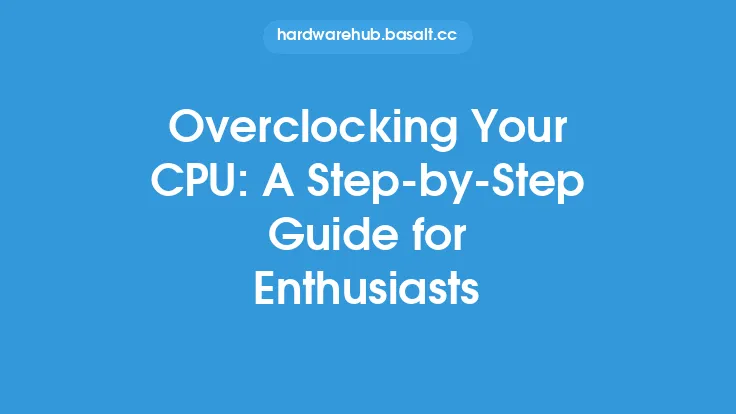The size of a CPU's cache memory plays a crucial role in determining its overall performance. Cache memory acts as a buffer between the main memory and the processor, storing frequently accessed data and instructions to reduce the time it takes to access them. A larger cache size can significantly improve CPU performance by reducing the number of times the processor needs to access the slower main memory. In this article, we will delve into the details of how cache size affects CPU performance and explore the technical aspects of cache memory.
Cache Size and Performance
The relationship between cache size and performance is complex and depends on various factors, including the type of workload, the cache hierarchy, and the memory access patterns. Generally, a larger cache size can improve performance by reducing the number of cache misses, which occur when the processor needs to access data that is not stored in the cache. Cache misses can result in a significant increase in memory access latency, leading to a decrease in overall system performance. A larger cache size can also improve performance by allowing the processor to store more data and instructions, reducing the need for frequent memory accesses.
Cache Hierarchy and Size
The cache hierarchy, which includes the L1, L2, and L3 caches, plays a critical role in determining the performance impact of cache size. The L1 cache, which is the smallest and fastest cache level, is responsible for storing the most frequently accessed data and instructions. The L2 cache, which is larger and slower than the L1 cache, stores less frequently accessed data and instructions. The L3 cache, which is the largest and slowest cache level, stores infrequently accessed data and instructions. The size of each cache level can significantly impact performance, with larger caches generally providing better performance.
Cache Line Size and Performance
The cache line size, which is the size of the data block stored in the cache, can also impact performance. A larger cache line size can improve performance by reducing the number of cache misses, but it can also increase the amount of data that needs to be transferred between the cache and main memory. The optimal cache line size depends on the specific workload and system configuration. Some systems use a fixed cache line size, while others use a variable cache line size that can be adjusted based on the workload.
Cache Associativity and Performance
Cache associativity, which refers to the number of ways that a cache can be accessed, can also impact performance. A higher degree of associativity can improve performance by reducing the number of cache conflicts, which occur when multiple data blocks are mapped to the same cache line. However, higher associativity can also increase the complexity and power consumption of the cache. The optimal degree of associativity depends on the specific workload and system configuration.
Cache Replacement Policies and Performance
Cache replacement policies, which determine which data blocks are replaced when the cache is full, can also impact performance. The most common replacement policies are the Least Recently Used (LRU) policy and the First-In-First-Out (FIFO) policy. The LRU policy replaces the least recently accessed data block, while the FIFO policy replaces the data block that has been in the cache the longest. The optimal replacement policy depends on the specific workload and system configuration.
Conclusion
In conclusion, the size of a CPU's cache memory plays a critical role in determining its overall performance. A larger cache size can improve performance by reducing the number of cache misses and allowing the processor to store more data and instructions. The cache hierarchy, cache line size, cache associativity, and cache replacement policies can all impact performance, and the optimal configuration depends on the specific workload and system configuration. Understanding the technical aspects of cache memory is essential for optimizing CPU performance and achieving the best possible results in a wide range of applications. By considering the factors discussed in this article, developers and system administrators can make informed decisions about cache size and configuration to achieve optimal performance.





